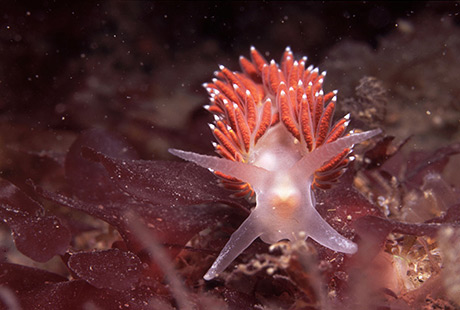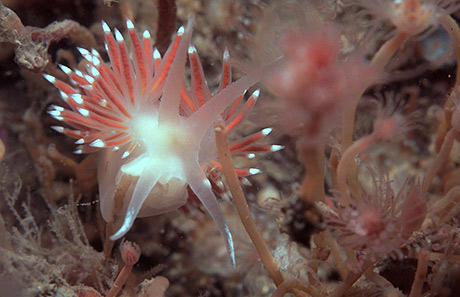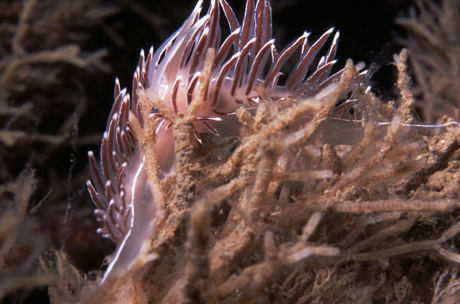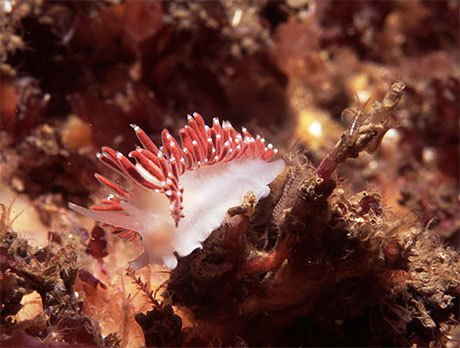Nudibranch: Coryphella browni

Coryphella browni taken on Chickens Rock in the Isle of Man. Photo credit: Tim Nicholson.
Coryphella browni, or the Scarlet Lady nudibranch, feeds mostly on Oaten pipes hydroids (Tubularia indivisa). These are simple stinging-cell animals related to corals and sea anemones. It not only doesn't mind their stinging cells, it actually puts them to use. The nudibranch passes the intact cells through its digestive tract and out to the cerata tips. Any animal taking a bite out of the cerata will cause the stinging cells to discharge, then give up and go and eat something less painful.

Coryphella browni with its favourite food the Oaten pipe hydroid (Tubularia indivisa). Photo credit: Tim Nicholson.
Coryphella browni has a translucent body and numerous red cerata with white tips, on its back. The inner cerata are longer than the outer. It grows up to 5 cm long. You find it around the British Isles and Northern Europe. There are other species very similar to C. browni, such as Coryphella lineata which is distinguished by white lines down its body and along its cerrata.

Coryphella lineata (above) is distinguished from C. brownii by the white lines on its body and cerrata. Photo credit: Tim Nicholson.
Nudibranchs are hermaphrodites: possessing both male and female organs. If you see wavy white threads amongst the hydroid stems, these are the eggs of Coryphella browni.

Coryphella browni. Photo by Tim Nicholson.
Coryphella browni was first described by Bernard Picton in 1980.
Animalia (Kingdom) > Mollusca (Phylum) > Gastropoda (Class) > Opisthobranchia (Subclass) > Nudibranchia (Order)
Photos taken on the Isle of Man and copyright Tim Nicholson.
Further Reading
Great British Marine Animals, by Paul Naylor, Deltor (2005)



